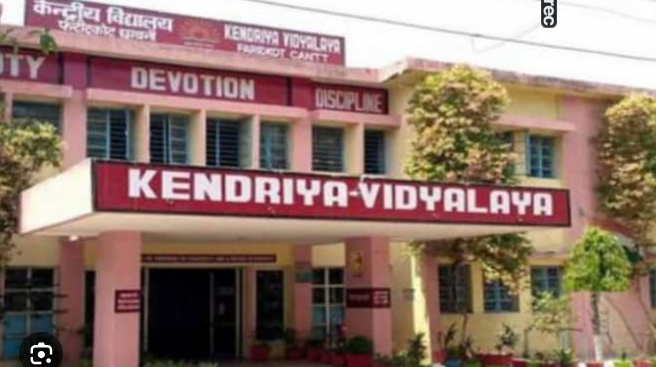
KVS Suggestive List of Teaching Aids, E-Content, and Innovative Practices
The Kendriya Vidyalaya Sangathan (KVS), under the Ministry of Education, has long stood as a beacon of quality education in India. With the growing demand for dynamic, learner-centric classrooms, KVS emphasizes the need for integrating teaching aids, e-content, and innovative practices in everyday teaching-learning processes. The goal is simple but impactful — to make learning more interactive, inclusive, and meaningful for students of all age groups. In this article, we present a suggestive list of tools and techniques recommended by KVS educators and experts to enhance the overall academic experience in classrooms across the nation.
Importance of Teaching Aids in KVS Classrooms
Teaching aids are essential components of the teaching methodology in Kendriya Vidyalayas. They help in explaining difficult concepts, making abstract ideas more tangible, and sustaining student attention. Whether it is a science experiment, a geography map, or a mathematical model, these aids help bridge the gap between theoretical knowledge and practical understanding.
Some commonly used teaching aids in KVS include:
Charts and Posters: Used to represent timelines, life cycles, grammar rules, or mathematical formulas.
Working Models: Helpful in subjects like Physics, Biology, and Geography for live demonstrations.
Real Objects (Realia): Items such as fruits, flowers, coins, or tools are used for concept explanation in EVS or general science.
Flashcards: Great for vocabulary building and arithmetic drills in primary classes.
Puppets and Toys: Particularly effective in pre-primary and primary sections to teach moral stories or language skills.
Blackboards, Smart Boards, and Bulletin Boards: Used extensively for collaborative learning and visual engagement.
Lab Equipment and Kits: For science practicals and mathematics experiments.
These aids are not just supplementary—they are transformative in ensuring conceptual clarity and sparking interest among learners.
The Role of E-Content in KVS Digital Learning Framework
KVS has made significant strides in digital education, especially with the adoption of platforms like DIKSHA, ePathshala, NCERT e-content, and KVS’s own LMS portals. With classrooms becoming increasingly hybrid in nature, e-content is no longer a luxury—it’s a necessity. These digital resources are aligned with the NCERT curriculum and are available for various subjects from Class 1 to 12.
Here’s a suggestive list of e-content tools and platforms widely used in KVS:
DIKSHA App: Offers curriculum-aligned interactive content in the form of videos, worksheets, and assessments.
NCERT’s e-Pathshala: Provides free downloadable textbooks, audio lessons, and videos.
YouTube Educational Channels: Various channels by KVS and regional offices provide subject-wise digital lessons.
PowerPoint Presentations (PPTs): Teachers create and share custom content based on their lesson plans.
Google Classroom & MS Teams: Used for assignments, online classes, quizzes, and student-teacher interaction.
Educational Apps: Apps like Khan Academy, BYJU’S, and Quizizz are integrated for reinforcing classroom learning.
Audio Books and Podcasts: Especially effective in enhancing listening skills and language comprehension.
AR/VR Tools (Pilot Projects): In select KVs, virtual reality and augmented reality are being tested to teach complex concepts in immersive ways.
These digital resources cater to different learning styles and ensure that students get the opportunity to learn at their own pace.https://epathshala.nic.in/

Innovative Practices Promoted in KVS
Kendriya Vidyalayas are constantly encouraged to adopt innovative practices that go beyond textbook learning and foster 21st-century skills such as creativity, critical thinking, collaboration, and communication. The use of Building as Learning Aid (BALA) models, wall painting, activity-based teaching, and experiential learning are some of the key initiatives under this umbrella.
Here are some innovative teaching practices observed and promoted across various Kendriya Vidyalayas:
Flipped Classroom Approach: Students are assigned topics to study at home via videos or reading material and classroom time is devoted to discussions and activities.
Peer Teaching and Group Learning: Encouraging students to learn collaboratively and teach their peers builds confidence and understanding.
Project-Based Learning (PBL): Students work on real-life problems and submit creative solutions, promoting research and teamwork.
Integration of Art in Education (Art-Integrated Learning): Drawing, drama, music, and storytelling are used to make lessons more engaging.
Theme-Based Morning Assemblies: Assemblies on topics like sustainability, health, or national heroes provide moral and academic value.
Use of Role Play and Simulation: Teachers use dramatization in subjects like History, Civics, and Literature for better concept absorption.
Learning through Games and Quizzes: Subject-specific quizzes and educational games are used for concept reinforcement.
Mind Mapping and Graphic Organizers: These are used to teach abstract concepts by breaking them into visual representations.
ICT-Enabled Assessments: Tools like Kahoot, Google Forms, and Mentimeter make assessments more interactive and immediate.
Language and Reading Corners: Many KVs have subject corners in classrooms where students can explore books, dictionaries, and learning tools during free periods.
Encouraging Teacher Innovation
One of the strengths of KVS lies in its robust teacher training and motivation programs. Teachers are encouraged to submit their best practices, innovative lesson plans, and classroom strategies for recognition at the National Innovation and Experimentation Awards organized annually. This keeps the spirit of innovation alive and ensures that students are always engaged in fresh and creative ways.
Conclusion
In Kendriya Vidyalayas, the journey of education is not just about completing the syllabus—it’s about creating learners for life. Through a carefully selected mix of teaching aids, e-content, and innovative practices, KVS ensures that every student, irrespective of background, has access to meaningful, holistic, and joyful learning experiences. These tools and strategies not only make classrooms more engaging but also prepare students for real-world challenges. As education continues to evolve, KVS remains committed to nurturing minds that are curious, confident, and capable.
Please don’t forget to leave a review.

